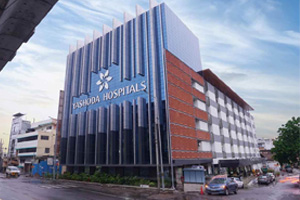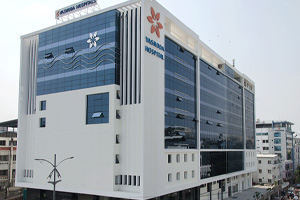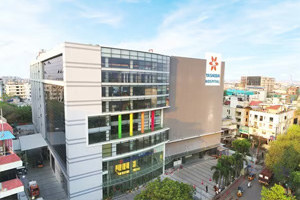Why Choose Yashoda Hospitals for Indwelling Pleural Catheter?
Yashoda Hospitals offers indwelling pleural catheter insertion for individuals with chronic pleural effusion with personalized care and cutting-edge technology.
Leaders Surgical Center
Yashoda Hospitals is recognized as the Best Hospital for indwelling pleural catheter insertion in Hyderabad, offering exceptional services.
Expert Pulmonology Team
Our highly experienced surgical team specializes in performing advanced indwelling pleural catheter insertion services, ensuring optimal outcomes for all patients.
Cutting-edge Facilities
Equipped with state-of-the-art technology and advanced medical equipment, our facility provides the perfect setting for precise and accurate indwelling pleural catheter insertion services.
Dedicated Surgical Care
Our dedicated pulmonologists are committed to guiding you through every step in the treatment of chronic pleural effusion.
What is Indwelling Pleural Catheter?
Pleura are thin membranes that line the inside of your lungs and chest cavity. Pleural effusion, sometimes known as “water on the lungs,” is the buildup of excess fluid between the pleural layers outside of your lungs, commonly observed in certain conditions, such as congestive heart failure, cancer, and infections.
For patients with chronic or malignant pleural effusion experiencing breathing difficulties, chest pain, or persistent coughing, an indwelling pleural catheter offers a minimally invasive treatment. This catheter is inserted into the chest to facilitate continuous drainage of excess fluid, providing symptom relief and improving quality of life.
| Procedure Name | Indwelling Pleural Catheter |
|---|---|
| Type of Procedure | Minimally Invasive |
| Type of Anesthesia | Local anesthesia |
| Procedure Duration | 30- 60 minutes |
| Recovery Duration | A few days to weeks |
Indwelling Pleural Catheter: Pre-Op & Post-Op Care
Preparation: Before the procedure, you may be advised to fast for a specific period. Also, certain diagnostic tests, such as chest X-rays, are performed to get details about the fluid buildup in the lungs. Certain medications, such as blood thinners & NSAIDs, have to be stopped to prevent the risk of bleeding during the procedure. You are asked to take a shower to minimize the risk of infection while inserting a catheter.
During the Procedure: In the procedure room, local anesthesia is administered to reduce discomfort during catheter insertion. The pleural region is exposed by making a tiny puncture in the chest with a tiny needle, and ultrasound is used to precisely insert the catheter. After the catheter has been positioned correctly, it is secured with stitches or an anchor device. Lastly, the fluid is then drained using a drainage bottle that is attached to the catheter’s end.
Recovery: Following surgery, you might be able to leave the hospital the same day and return home. However, overnight stays may be necessary based on individual conditions and hospital protocols. The recovery period is typically brief, and people can resume their regular activities a little sooner. However, they should refrain from engaging in some physically demanding activities as recommended. The symptoms, such as pain, redness, swelling, and slight difficulty in breathing, can occur during the healing process; however, worsening of these symptoms & any issue with drainage of fluid can be immediately reported to your doctor.
Post-Procedure Care: Keep the incision area clean & dry, take prescribed medication, and adhere to activity restrictions. Attend follow-up appointments for monitoring and guidance.
Benefits of Indwelling Pleural Catheter at Yashoda Hospitals
- Reduced hospital stay.
- Improved quality of life
- Minimizes the chest pain & breathing issues.
- Prevents frequent use of needle for draining the fluid
- Economically feasible and minimally invasive.









































 Appointment
Appointment WhatsApp
WhatsApp Call
Call More
More

